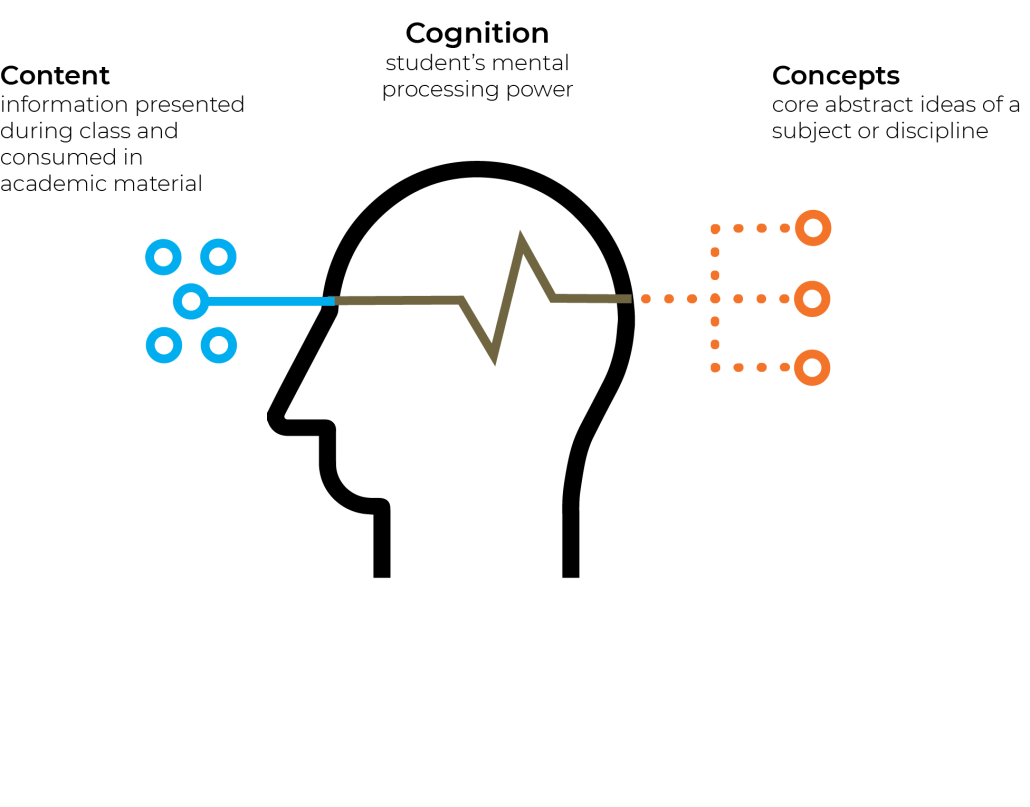In higher education, infrastructure plays a critical yet often invisible role in the success of both educators and students. Academic infrastructure, much like the physical systems that underpin our daily lives, forms the foundation upon which meaningful and impactful educational experiences are built. This article highlights the importance of academic infrastructure, its components, and its role in enhancing academic success.
Infrastructure serves as the vital backbone that empowers and sustains a society. It is the essential foundation upon which economic, social, and environmental systems are built, allowing for the smooth operation and interaction of different elements within these systems. From transportation networks that enable the movement of goods and people to communication systems that connect individuals and businesses, infrastructure is crucial in fostering growth and development.
We can easily imagine how difficult life would be without the power grids, shipping channels, roadways, plumbing systems, and internet servers that power our personal and working lives. Infrastructure facilitates our ability to live and work more easily and effectively.
Just as physical infrastructure supports societal functions, academic infrastructure underpins academic work. It encompasses the essential elements that facilitate effective teaching and learning. When academic work infrastructure elements are optimized for a course or program, they create a rewarding and impactful academic environment for both educators and students.
Academic work infrastructure is just as essential in higher education as physical infrastructure. With it, academic work becomes mutually rewarding for teachers and students. Without it, teachers are less impactful, and students underperform.
What is Academic Work Infrastructure?
Academic infrastructure consists of the course learning outcomes that frame a course, the perspectives that facilitate meaningful learning, the ways of thinking that transform course information into conceptual knowledge, and the communication methods that distill abstract concepts into informational ingredients and vice versa. Despite their critical role, these facilitative elements of the teaching and learning dynamic are rarely explicitly addressed during course design or professional development. Yet, they are the mechanisms that enable effective teaching and learning to occur. Similar to physical infrastructure, academic work infrastructure takes priority over visible course components such as curriculum design, syllabus creation, instructional methodologies, technological tools, and learning assistance measures that collectively support the academic work.
A robust academic infrastructure enables educators to effectively challenge students while empowering them to interact more deeply with the content. This synergy creates a dynamic and productive learning environment where both teachers and students contribute meaningfully at the right times, allowing both to thrive.
Core Elements of Academic Work Infrastructure
Figure 8.2: The three Cs of academic work
How to Successfully Transition Students into College: From Traps to Triumph, Page 135
Academic work consists of three core elements: content, cognition, and concepts. These elements form the foundation of educational activities:
- Content: This includes the information presented during classes and the material students engage with in their studies. It serves as the building blocks of academic work.
- Cognition: This involves the mental processes students use to transform content into conceptual knowledge. Cognition provides direction to academic work.
- Concepts: These are the core ideas within a subject or discipline, representing the abstract notions that content aims to convey. Concepts provide the ultimate destination of academic work.
Missing Academic Infrastructure in a First-year Course
When academic infrastructure is missing or inadequate, opportunities for great learning are missed and replaced by frustration and failure. Many institutions have developed first-year courses and programs to help new students adjust to college academic work. These courses can be excellent vehicles for fortifying new college students against the insidious transition traps that my book reveals. Yet, time and again, I find that these courses fall short, rendering students’ efforts ineffective.
Consider Jane, a student enrolled in a first-year seminar course, Music Through the Ages. Despite her diligent note-taking and studying, Jane struggles with exams. Her issue lies not in capturing content but in processing it appropriately. Initially, Jane focuses on memorizing facts—creating a mental inventory of performers and their songs—without understanding the deeper relationships and contexts. Leading up to each assessment, she felt confident in her knowledge. However, her knowledge did not translate, resulting in grades well below her expectations.
Which infrastructure element is Jane ignoring or omitting that is causing her to perform so poorly?
Jane’s Transformation Through Infrastructure
 Jane’s turning point comes when she seeks assistance due to her poor performance. Through a metacognitive diagnosis, it becomes clear that while she captures the content well, she is not processing it correctly. Jane is working diligently to memorize and recall all the details covered during class. Although her covered various musicians and their respective songs during class, he did not explicitly state that he expected students to analyze and evaluate the interplay between societal conditions and musical expressions. As a consequence of this poor infrastructure, Jane, along with many peers over the course’s lifespan, underperformed, and the transformative course experience the professor envisioned never materialized.
Jane’s turning point comes when she seeks assistance due to her poor performance. Through a metacognitive diagnosis, it becomes clear that while she captures the content well, she is not processing it correctly. Jane is working diligently to memorize and recall all the details covered during class. Although her covered various musicians and their respective songs during class, he did not explicitly state that he expected students to analyze and evaluate the interplay between societal conditions and musical expressions. As a consequence of this poor infrastructure, Jane, along with many peers over the course’s lifespan, underperformed, and the transformative course experience the professor envisioned never materialized.
Consider if Jane had approached the class with this perspective in the forefront of her mind. She would have recognized how music that emerged during wartime differs from music during economic booms or how the civil rights era influenced the music of that period. This deep perspective was an essential infrastructure element Jane needed to succeed in this class and likely other classes as well. By establishing better cognitive infrastructure, Jane started to think more effectively about the content, transforming the quality of her knowledge and elevating her grades in this course and others.
With this shift in perspective and cognitive approach, two essential elements of academic work, Jane’s performance significantly improved, making the course more engaging and rewarding for her. Her enhanced ability to analyze and evaluate the material allowed her to develop a deeper understanding of the concepts.
Jane’s story illustrates how installing the proper infrastructure is the surest way to align short-term student course performance with long-term retention, yearly progress and graduation rates.
Impact of Robust Academic Infrastructure
A well-developed academic infrastructure enables educators to challenge students effectively, fostering a dynamic and productive learning environment. This synergy allows both teachers and students to thrive, contributing meaningfully to the academic work.
In How to Successfully Transition Students into College: From Traps to Triumph, success stories highlight how proper infrastructure can significantly enhance retention, academic progress, and graduation rates. These improvements are not exclusive to a select few institutions but are achievable by any school that invests in the right infrastructure systems.
Jane’s story underscores the importance of establishing academic infrastructure early in students’ college careers. By establishing the right academic infrastructure, institutions can fortify their student cohorts against the transition traps I reveal in my book, creating a culture of academic excellence where deep learning and high performance are the norms.
Questions for Reflection
- Reflecting on the Three C Elements of Academic Work—content, concepts, and cognition—which of these elements are prioritized in your experience? Which is most often overlooked? Have you ever learned how to strategically integrate these elements?
- What takeaways do you have from Jane’s story in the “Music Through the Ages” course?
- What parallels can you draw between prioritizing physical infrastructure in our lives and prioritizing academic infrastructure in higher education?
- How can educators better prioritize and integrate these academic infrastructure elements to enhance student success and reduce frustration?
As your community addresses these questions, you will better understand the unseen but vital systems that support effective teaching and learning, fostering environments where all stakeholders can thrive.
ARE YOU A THOUGHT LEADER? GET YOUR FREE PDF TO SHARE WITH YOUR COMMUNITY!
You can get your personal copy of this article by leaving a comment below.




4 comments
Wendi Bellanger
This was such a refreshing article. We often neglect academic infrastructure in favor of visible competencies we can evaluate with ease.
Leonard Geddes
Hi Wendi,
Thank you for the contribution. I hope more educators prioritize academic work infrastructure moving forward. Addressing it has been a game-changer! I’ll send you the PDF shortly.
Meera Rastogi
I really like this framework a lot- it provides a way to think about substantive changes when transforming a class. However, I believe the heart of the student is missing from this framework. Feelings (heart) can enhance or impair one’s cognitive abilities.
Leonard Geddes
Hi Meera,
Thanks for you input. You are correct. This article could include more of the students’ emotions. I included Jane’s story as a way of sharing her frustrations. However, I’m curious how you would like see more feelings added to the piece. I will send you the PDF version of the article shortly. Thanks again for your contribution!